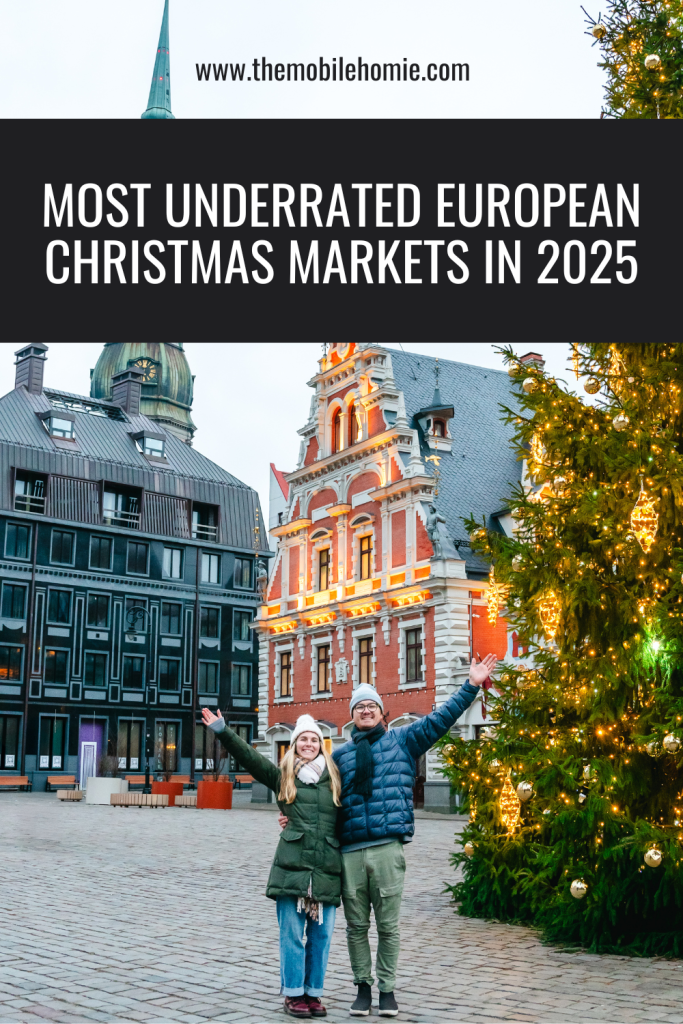Most Underrated European Christmas Markets in 2025
The Mobile Homie contains affiliate links and is a participant in the Amazon Services LLC Associates Program, as well as other affiliate programs. If you click on a link or make a purchase through one of these links, we may earn a small commission at no extra cost to you. For more details, see our Privacy Policy.
While millions flock to the glittering stalls of Cologne and Nuremberg, some of Europe’s most magical Christmas markets hide in plain sight, waiting for curious travelers who crave authentic holiday magic over Instagram crowds.
Last December, JT and I embarked on what I can only describe as a European Christmas market pilgrimage across seven European countries. Armed with nothing but Eurail passes, an insatiable appetite for mulled wine, and a healthy skepticism of tourist traps, we discovered something incredible: the most enchanting Christmas markets aren’t always the most famous ones.
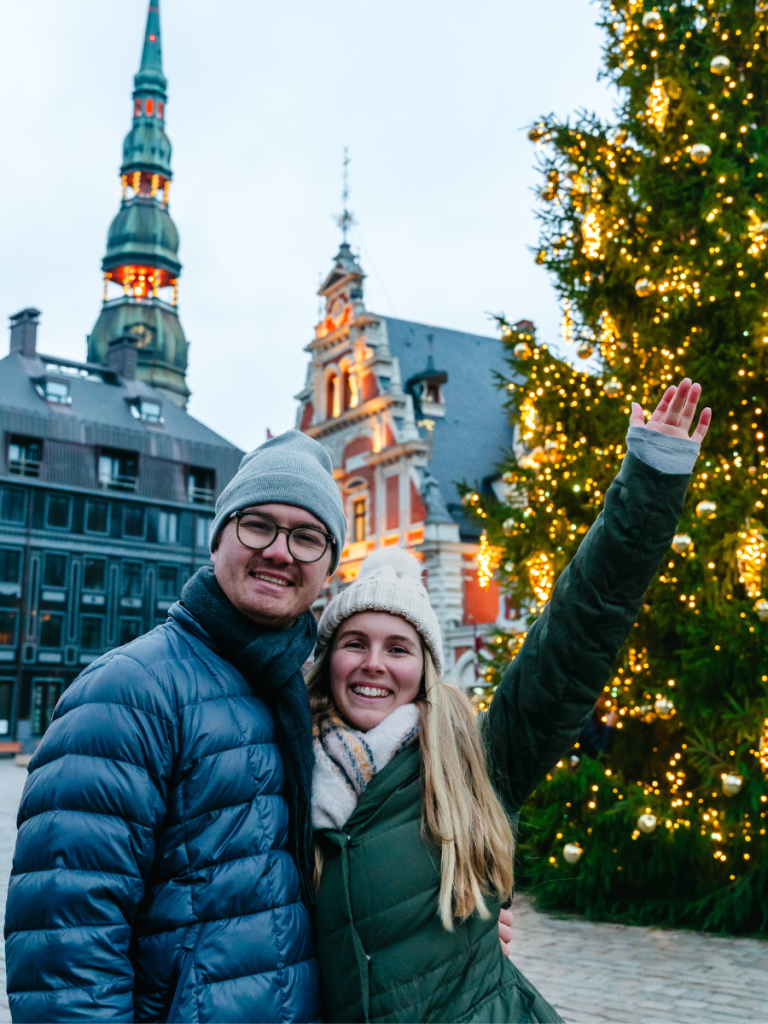
Our journey took us through Budapest, Bratislava, Vienna, Tallinn, Riga, Wrocław, and Prague. While Budapest and Vienna certainly earned their reputations, it was the so-called “secondary” cities that completely stole our hearts and our euros. These hidden gems delivered all the cozy vibes, authentic traditions, and magical moments we craved, minus the shoulder-to-shoulder crowds and inflated prices.
Why These Hidden Gems Beat the Famous Markets
Let me paint you a picture of our Budapest experience: we stepped off the tram near the Danube, excited to explore one of Europe’s most celebrated Christmas markets, only to find ourselves swimming through a sea of cruise ship passengers clutching overpriced mulled wine in plastic cups that cost €8 each. The magic? Nowhere to be found under the fluorescent lights and tourist-trap pricing.
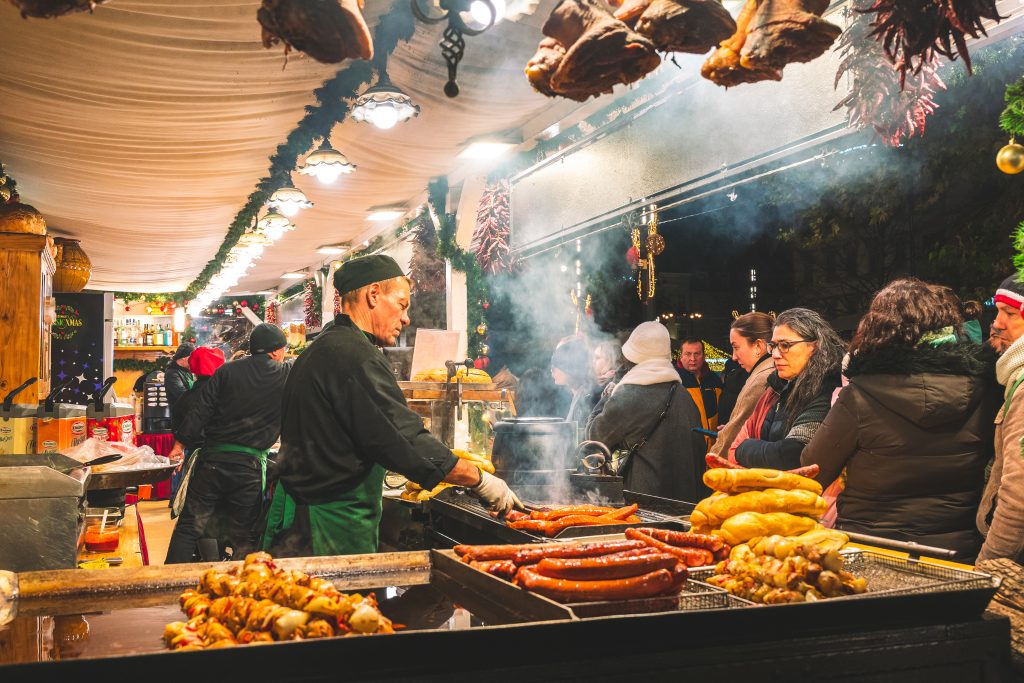
In that sense, Vienna was slightly better. Vienna’s Christmas markets are absolutely magical, with their towering Christmas trees and traditional wooden stalls stretching as far as the eye can see. The city offers so many markets to choose from that you could spend a week market-hopping without repeating a single stall. Prices were surprisingly reasonable, and we loved the authentic mix of locals and tourists sharing benches over steaming cups of Glühwein.

But here’s where our adventure got interesting: the moment we stepped into Bratislava, Tallinn, and Riga, everything changed. These markets felt like stepping into a local’s living room during the holidays. Vendors knew each other by name, local families explored with their children, and there were prices that wouldn’t make your wallet cry. We’re talking €2-3 (or the currency equivalent) for mulled wine instead of €6-8.
Wrocław completely blindsided us in the best possible way. This Polish gem boasted a massive market that rivaled Vienna’s size but with a fraction of the crowds. The food variety was mind-blowing, and everything was incredibly affordable.
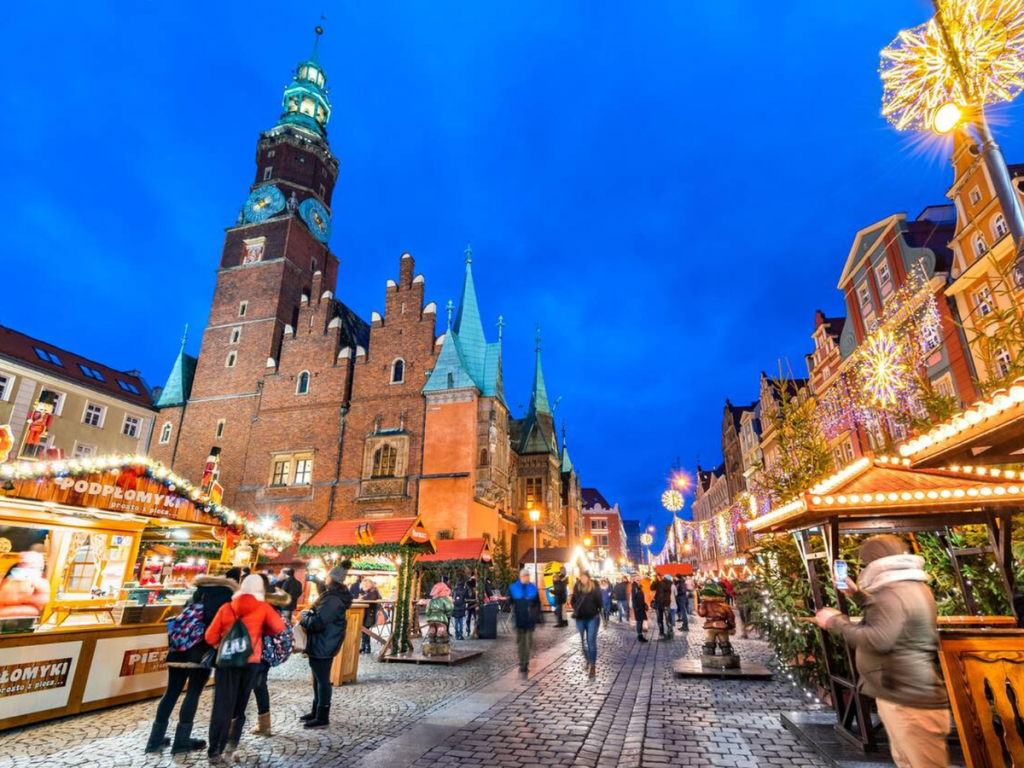
Even Prague, despite drawing its fair share of visitors to the Old Town Square market, felt more manageable and authentic than the cruise-ship chaos of Budapest. Plus, it’s where JT and I discovered bombardino: a heavenly concoction of brandy, coffee, and whipped cream that became our obsession for the rest of the trip.
The 5 Most Underrated European Christmas Markets
Bratislava, Slovakia
Dates: November 27, 2025 until January 6, 2026
Best time to visit: Weekdays (Tuesday-Thursday ideal, avoid weekends)
Must-try: Traditional Slovak Christmas cookies, Bryndzové Halušky (Slovak Potato Dumplings), and medovina (honey wine)
Our first “underrated” stop was just an hour train ride from Vienna, and honestly, we almost skipped it, be we are so glad we didn’t. Bratislava’s Christmas market unfolds like a fairytale beneath the castle walls, with the Danube twinkling in the distance and not a single tour group in sight.
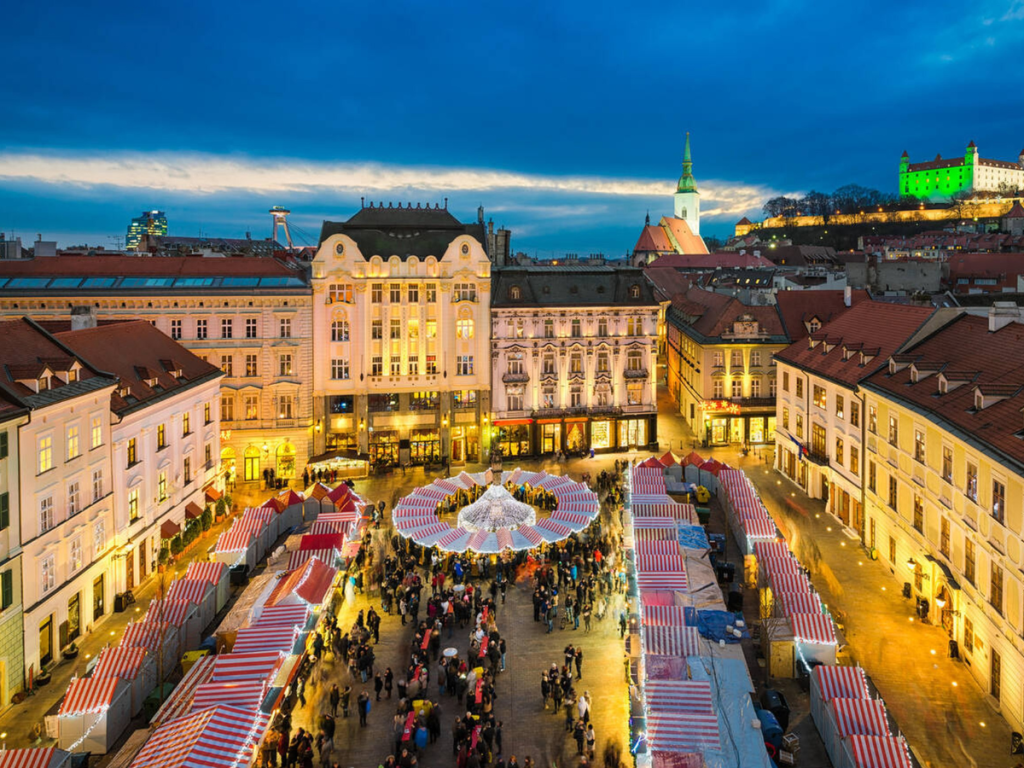
The market itself is delightfully compact (you can explore every stall in under an hour), but that’s exactly what makes it special.
The real star here is medovina, Slovakia’s traditional honey wine that tastes like liquid Christmas magic. At €2.50 a cup (with a €2 deposit for the plastic cup), it was a steal compared to Vienna’s prices. The Slovak Christmas cookies, called medovníky, are works of art! They are intricately decorated gingerbread that’s almost too beautiful to eat.
If you’re planning to spend more time in Bratislava (which we highly recommend), we wrote a comprehensive guide covering all the city’s Christmas markets and insider tips at The Ultimate 2025 Guide to Bratislava Christmas Markets.
Tallinn, Estonia
Dates: November 21 – December 27, 2025
Best time to visit: Weekdays preferred
Must-try: Mulled wine with local spices and traditional black bread
Flying into Tallinn from our previous stop, we knew we were in for something special the moment we glimpsed the medieval towers from the plane. But nothing prepared us for the magic of Christmas market stalls nestled within 13th-century stone walls.
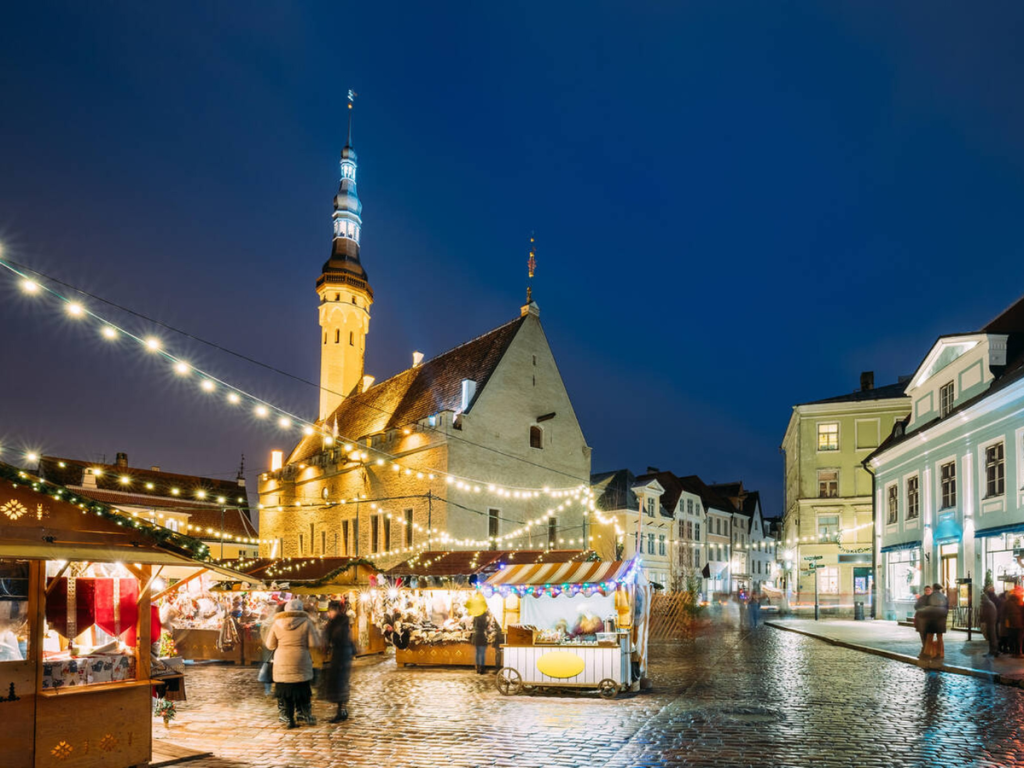
Tallinn’s Christmas market feels like stepping into a medieval fantasy novel. The cobblestone streets, Gothic architecture, and twinkling lights create an atmosphere that’s pure enchantment. What struck us most was how naturally the Christmas stalls blended into the ancient cityscape as if they’d been there for centuries…It really felt like you were stepping back in time!
The Estonian twist on mulled wine includes local spices that we’d never encountered before, creating a delicious blend that’s distinctly Baltic. Paired with thick slices of traditional black bread topped with local honey, it was the perfect fuel for exploring the winding medieval streets!
The vendors here were some of the friendliest we encountered, with many speaking excellent English and eager to share stories about Estonian Christmas traditions. We learned that Estonians celebrate Christmas on December 24th with a focus on family gatherings and traditional foods: a refreshing change from the commercial focus of larger markets.
Riga, Latvia
Dates: November 28 – January 4
Best time to visit: Monday-Wednesday
Must-try: Riga Black Balsam hot drinks and traditional pastries
The bus journey from Tallinn to Riga gave us stunning views of the Baltic countryside, but nothing compared to our first glimpse of Riga’s Art Nouveau architecture framing the Christmas market in the old town square.
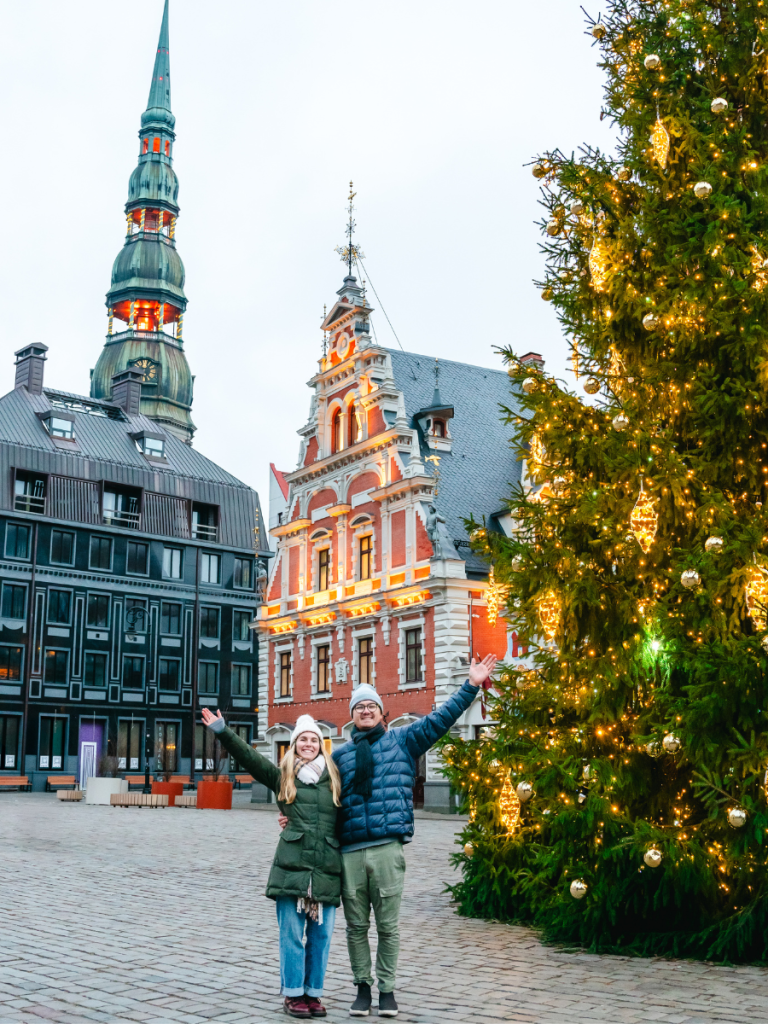
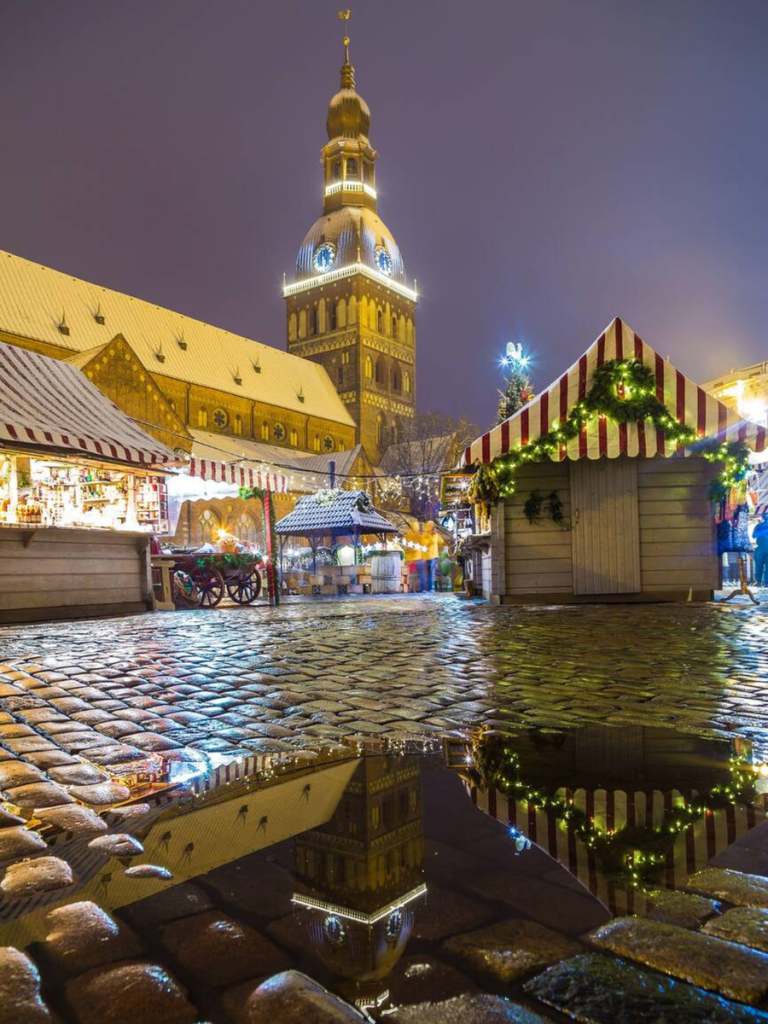
Here’s a fun fact that’ll impress your travel companions: Riga claims to be the birthplace of the decorated Christmas tree tradition, dating back to 1510. Whether or not it’s true, the massive tree dominating the market square certainly makes a convincing case.
Riga surprised us with its sophistication. The market stalls showcase beautiful Latvian handicrafts, from intricate amber jewelry to hand-knitted mittens, the quality was exceptional, and prices were incredibly reasonable!
The real revelation was Riga Black Balsam, a traditional herbal liqueur that locals mix with hot tea or coffee. It sounds bizarre, but trust me: it’s like drinking liquid warmth. The local pastries, particularly the traditional rye bread cookies, provided the perfect complement to our Balsam-spiked hot drinks.
Wrocław, Poland
Dates: November 21, 2025 – January 7, 2026
Best time to visit: Tuesday-Thursday
Must-try: Polish pierogi and oscypek cheese
Wrocław wasn’t even on our original itinerary. We added it as an afterthought, thinking it might be a quick stop between bigger cities. What we found was the surprise star of our entire trip.
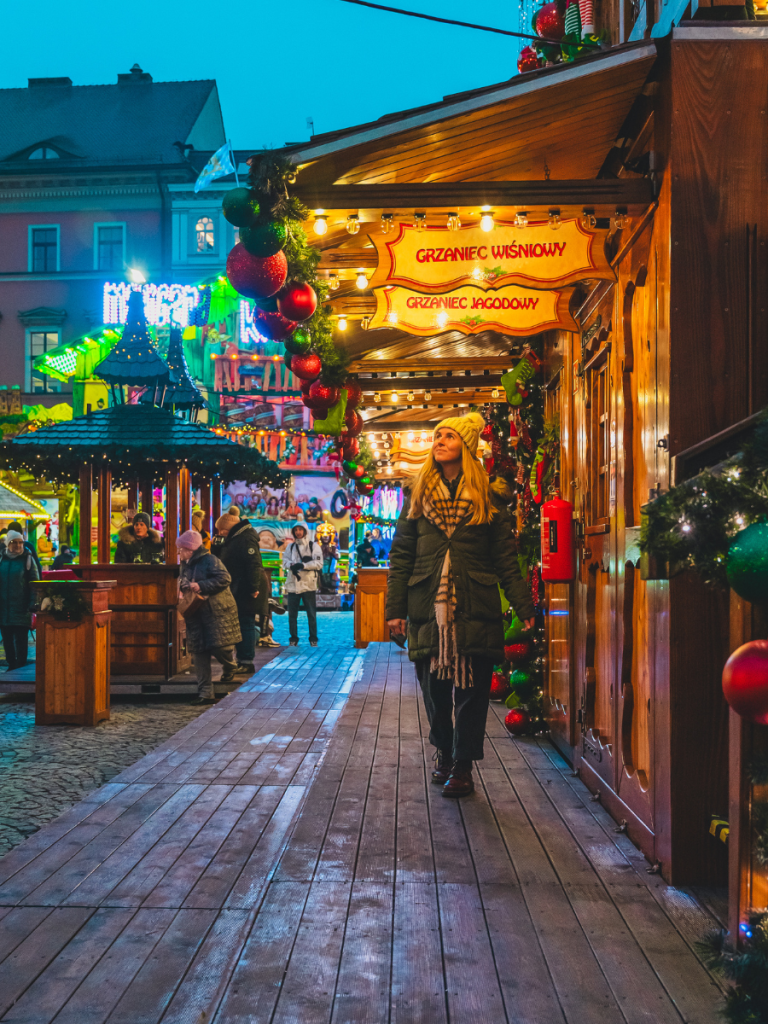

This market was HUGE (easily rivaling Vienna in size), but with a fraction of the crowds. The entire main square transforms into a Christmas wonderland, complete with Wrocław’s famous dwarf statues dressed in tiny Christmas outfits. (Yes, it’s as adorable as it sounds.)
The food scene here was absolutely incredible. Polish pierogi stalls offered varieties we’d never seen before, from traditional potato and cheese to creative seasonal fillings like mushroom and cranberry. Everything was ridiculously affordable: a hearty plate of pierogi with sides cost around €4-5.
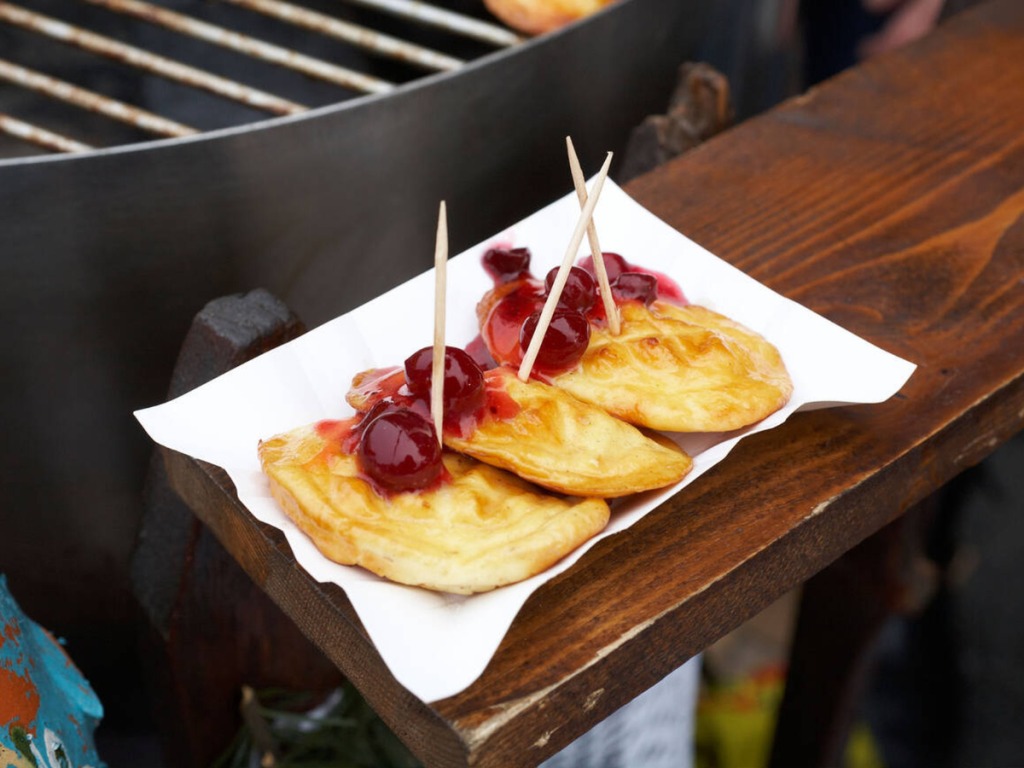
The oscypek cheese (a traditional smoked sheep’s cheese from the Polish mountains) grilled and served with cranberry jam became our go-to afternoon snack. Watching the vendors expertly grill these delicious spindle-shaped cheeses was entertainment in itself.
Prague, Czech Republic
Dates: November 29, 2025 – January 6, 2026
Best time to visit: Weekdays (avoid December 20 – January 2)
Must-try: Traditional Czech Christmas sweets and svařák (mulled wine)
Prague’s Old Town Square Christmas market gets all the attention (and all the crowds), but the real magic happens in the lesser-known markets scattered throughout the city. We discovered gems in Lesser Town and on Kampa Island that felt worlds away from the tourist circus.
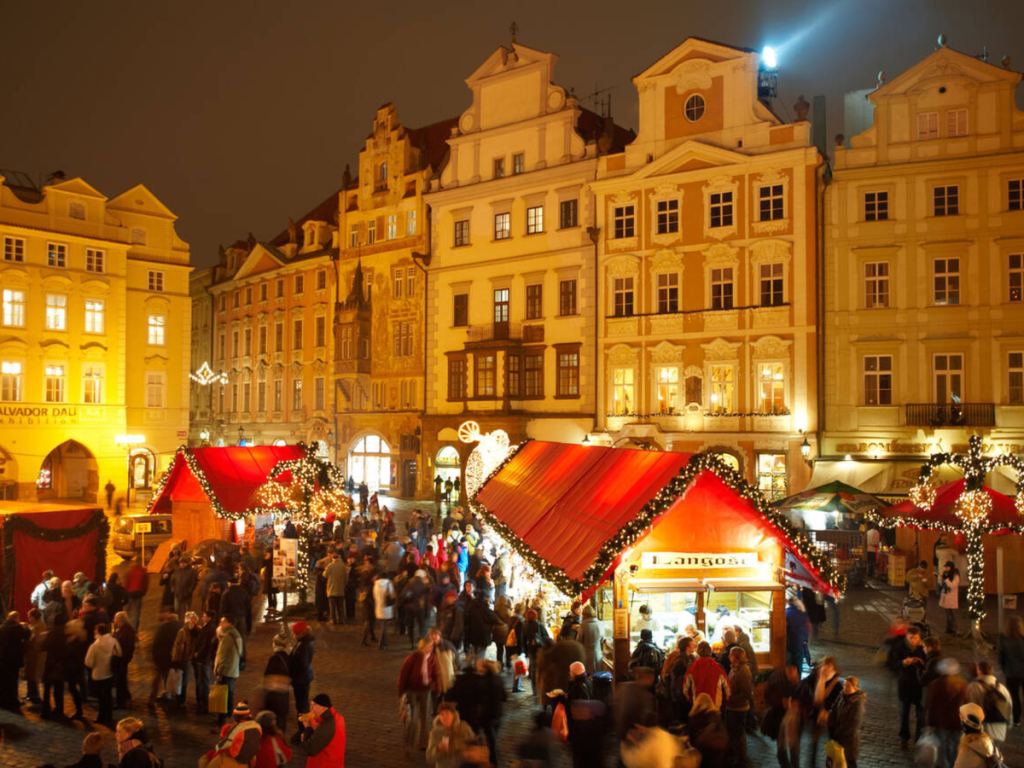
The Lesser Town market, nestled beneath Prague Castle, offered stunning views and a more relaxed atmosphere. Here, we found authentic Czech glass ornaments (Prague’s famous crystal craftsmanship applied to Christmas decorations) at prices that didn’t make us gasp in horror.
Czech svařák (their version of mulled wine) has a distinctly different spice blend than its German or Austrian cousins, with more emphasis on cinnamon and cloves. The traditional Christmas sweets, particularly trdelník (chimney cake) filled with cinnamon sugar, became our weakness.
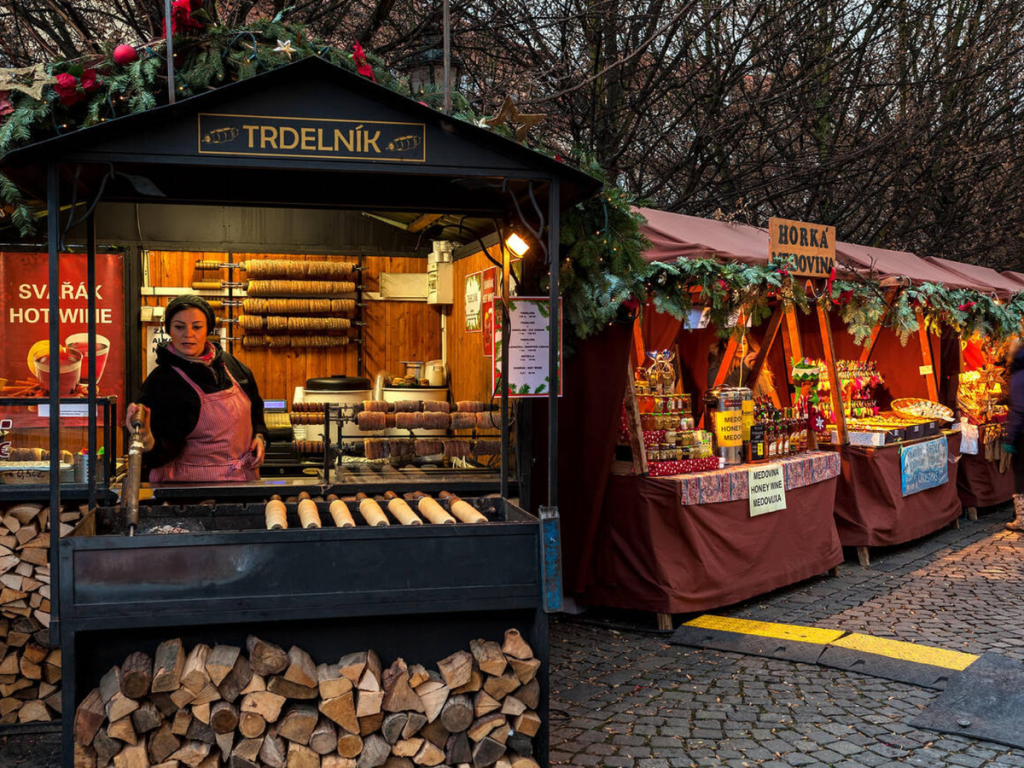
But the real game-changer was our introduction to bombardino. Picture this: rich espresso mixed with brandy, topped with a mountain of whipped cream and a sprinkle of cocoa. It’s like a warm hug in a mug, and at €3 each, we may have indulged a bit too frequently. JT still talks about that first sip like it was a religious experience.
Even these “hidden” markets draw crowds, especially on weekends. The Old Town Square market is undeniably beautiful (those Gothic towers and twinkling lights create pure Christmas card magic), but expect to share the experience with plenty of other travelers.
Essential Travel Information
Getting Between These Hidden Gems
Our transportation method varied depending on distance and convenience. The train from Vienna to Bratislava was a quick and scenic hour-long journey: perfect for a day trip or overnight stay. For longer distances like Tallinn to Riga, busses offered comfortable travel with beautiful countryside views.
When time was tight, we flew between some destinations. Budget airlines like Ryanair and Wizz Air connect these cities affordably, though you’ll want to book in advance for the best prices. The flights between Baltic capitals are particularly convenient and are often cheaper than train alternatives.
[Insert Image: European train interior or scenic view from train window]
A Eurail pass can be economical if you’re covering multiple countries, but do the math for your specific route. Sometimes individual tickets or budget flights work out cheaper, especially for longer distances.
Payment Tips: The Cup Deposit System Explained
Here’s insider knowledge that most travel guides completely miss: every single Christmas market we visited operated on a cup deposit system, and it accidentally became our favorite money hack.
Whether you’re sipping from plastic cups in Bratislava or ceramic mugs in Wrocław, expect to pay a €2-5 deposit on top of your drink price. Here’s the brilliant part: most vendors accept cards for drink purchases, but when you return your cup, you get cash back.

This system solves the eternal European travel dilemma of needing small bills for vendors who prefer cash. Buy your first mulled wine with a card, return the cup for €3-4 in coins, and suddenly you have perfect change for that handmade ornament or bag of roasted almonds.
The cup types vary by market:
- Bratislava, Tallinn, and Riga use plastic cups (still require deposits)
- Wrocław and Prague feature traditional ceramic mugs
- Vienna mixes both depending on the specific market
Some travelers (including us) keep one cup from each market as a souvenir: at €3-5 each, they’re cheaper than most official merchandise and way more meaningful!
What to Expect at These Markets
Unique Shopping and Authentic Souvenirs
Forget mass-produced Christmas ornaments with “Made in China” stickers. These underrated markets showcase genuine local craftsmanship that tells the story of each region’s traditions.
In Tallinn, we discovered intricate woodwork reflecting centuries of Baltic craftsmanship. Riga’s amber jewelry represented authentic Baltic gold, and Slovak markets in Bratislava featured hand-painted ceramics that reflected the country’s rich heritage.
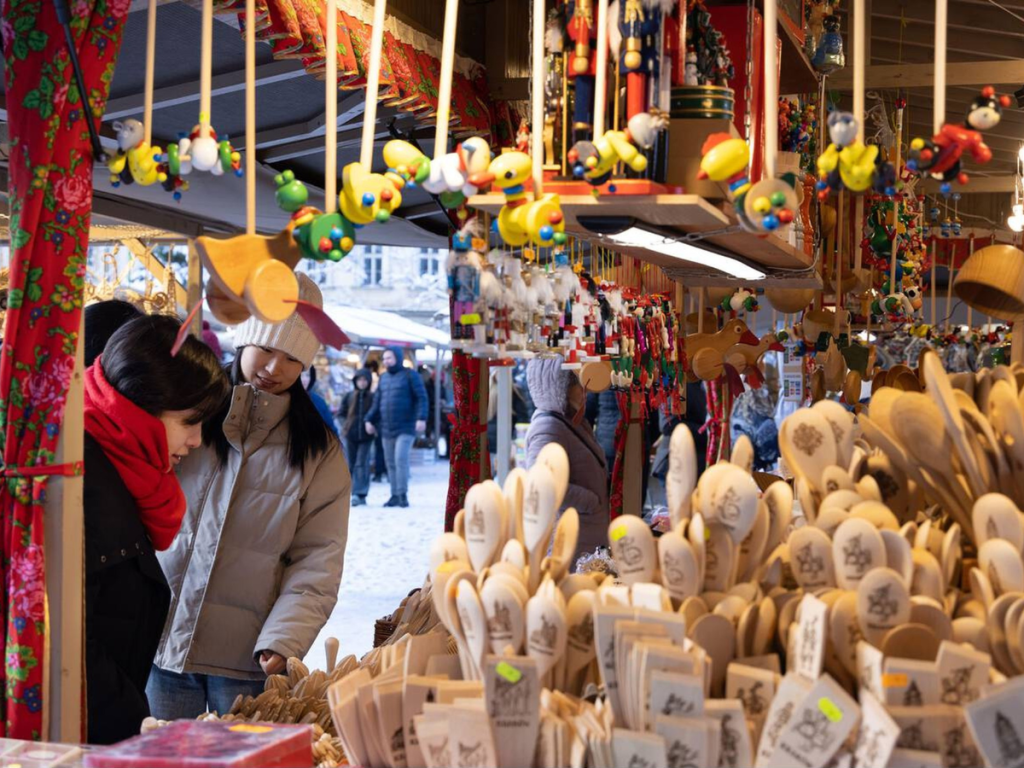
Wrocław surprised us with its leather goods and traditional Polish pottery. The famous Polish pottery, with its distinctive blue and white patterns, was available directly from artisans at prices significantly lower than tourist shops elsewhere!
Prague’s hidden markets offered the famous Czech crystal and glass ornaments, but also unique items like traditional marionettes and hand-blown glass decorations that captured the city’s artistic spirit.
Family-Friendly Activities and Atmosphere
These markets create magical experiences for kids without the overwhelming chaos of larger tourist destinations. Children can actually move around freely, watch artisans at work, and participate in activities without fighting crowds.
Most markets feature carousels, small rides, or interactive workshops where kids can try traditional crafts. The smaller scale means parents can relax while children explore safely. Local families frequent these markets, creating an authentic community atmosphere that welcomes visitors warmly.
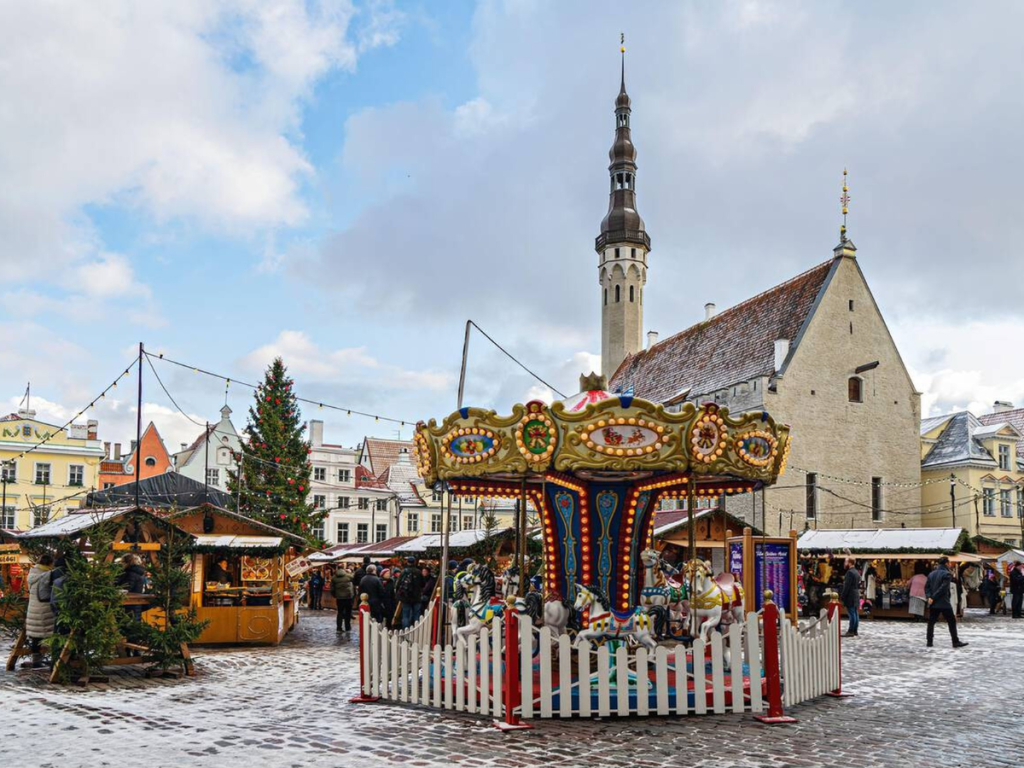
The food options cater well to families too. Beyond mulled wine and beer, vendors offer hot chocolate, fresh pastries, and kid-friendly versions of local specialties (including cider — it was actually my personal favorite!)!
Insider Tips for Christmas Market Success
After seven countries and countless cups of mulled wine, we learned a few tricks that made our experience infinitely better.
Layer like an onion. December weather in these cities is unpredictable. We experienced everything from mild and rainy in Prague to snowy and freezing (literally frozen haha) in Tallinn. Comfortable walking shoes with good grip are non-negotiable: those cobblestones get slippery (I would even go as far as to say wear boots).
Timing is everything. Weekday afternoons hit the sweet spot between opening energy and evening crowds. Markets come alive around 3 PM when locals finish work and families begin their evening strolls. Remember, it gets dark pretty early in the winter!
Learn a few local phrases. Even simple greetings in the local language opened doors and hearts. Vendors lit up when we attempted Slovak or Estonian greetings, often leading to longer conversations and better recommendations.
Embrace the cup collection. Rather than returning every cup, we kept one from each city (only the ceramics) as authentic souvenirs. They’re functional reminders of magical evenings and cost less than most official merchandise.
Don’t eat before you go. The food is the experience. Come hungry and sample widely: you’ll discover flavor combinations and traditional dishes that don’t exist anywhere else.
Bring a good camera or phone with night mode. These markets are most magical after dark when lights twinkle against medieval architecture. The photo opportunities are endless!
Why Your Next Christmas Trip Should Skip the Crowds
Standing in Tallinn’s market square, sipping spiced mulled wine while snowflakes danced around medieval towers, JT looked at me and said, “This is the most Christmas-sy I have felt in years!”
He wasn’t wrong. These underrated markets deliver everything you hope for in a European Christmas market experience: authentic traditions, reasonable prices, friendly locals, and that elusive feeling of discovering something special that hasn’t been packaged and sold to the masses.
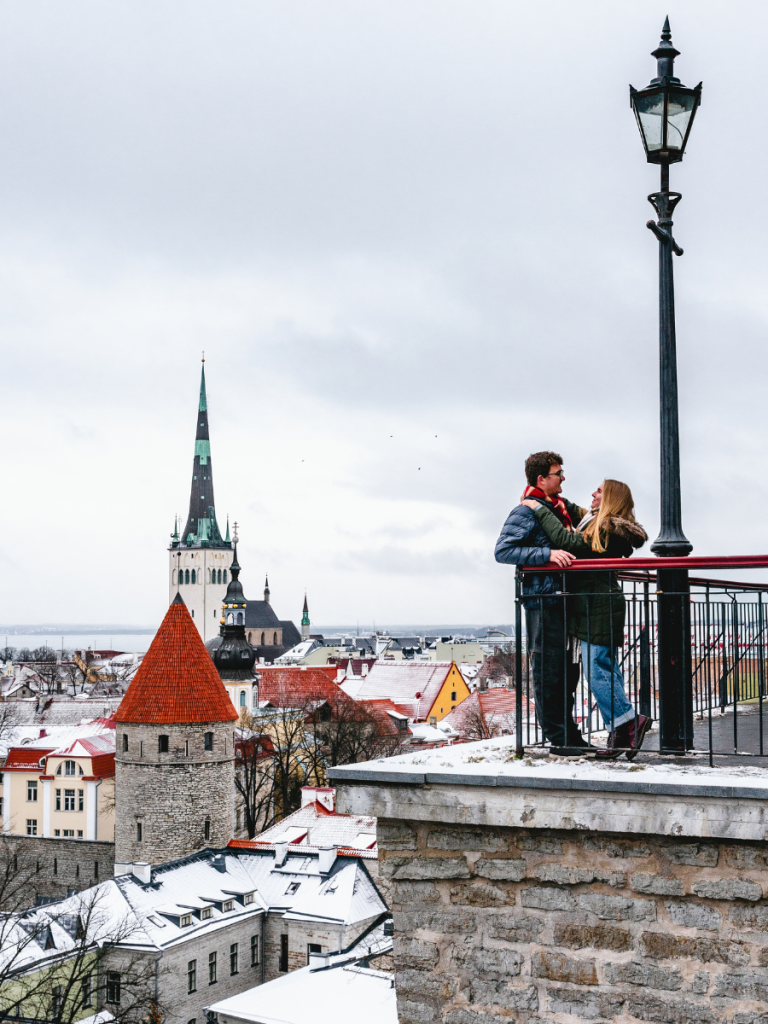
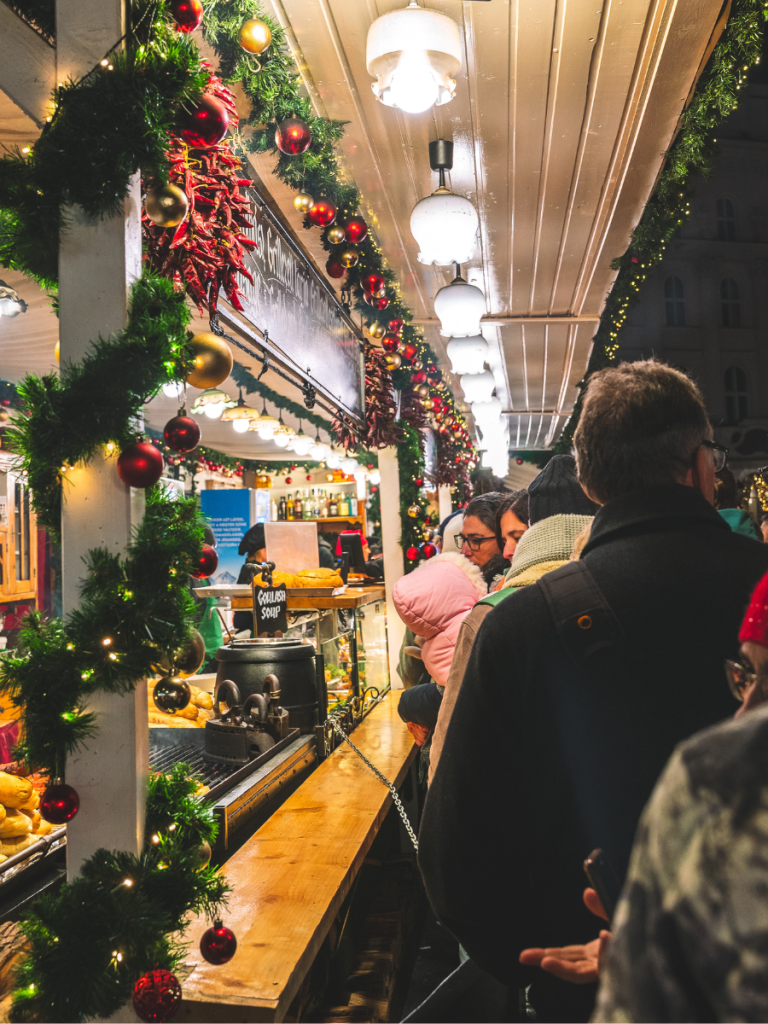
The famous markets certainly have their charm: Vienna’s scale and variety are undeniable, and there’s something to be said for experiencing destinations that have captured imaginations for decades. But if you’re seeking authentic Christmas magic rather than Instagram opportunities, these hidden gems deliver experiences that feel personal and meaningful.
Our December adventure proved that sometimes the best discoveries happen when you venture beyond the guidebook recommendations. While everyone else is fighting crowds in Cologne or Munich, you’ll be discovering the real heart of European Christmas traditions in markets that feel like they were created for locals first, visitors second.
We’ve done magical trips to Europe before (like our 7-Day Scottish Highland’s Roadtrip), but this magic was like no other. We were searching for some serious Christmas magic and that is exactly what we found in the most underrated Christmas markets of Europe.
Which underrated Christmas market will you discover first? Share your travel plans in the comments: I’d love to help you plan your own magical Christmas market adventure!
